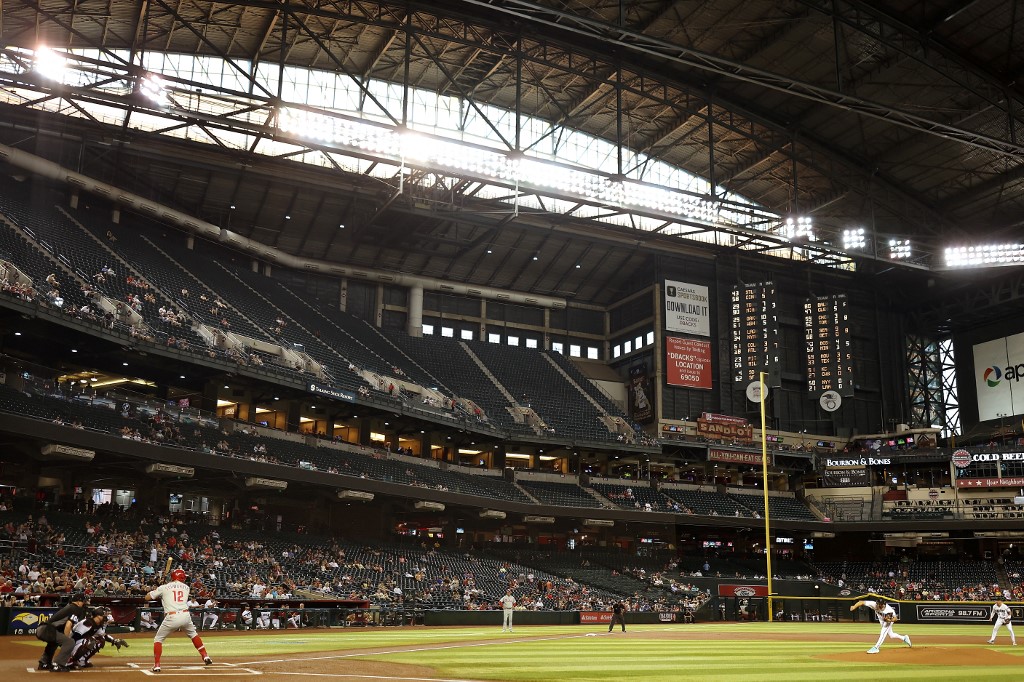
FILE – Starting pitcher Zac Gallen #23 of the Arizona Diamondbacks pitches against Kyle Schwarber #12 of the Philadelphia Phillies during the first inning of the MLB game at Chase Field on August 30, 2022 in Phoenix, Arizona. Christian Petersen/Getty Images/AFP
A pitch timer, bigger bases and limitations on defensive position shifting will come to Major League Baseball in 2023 rule changes approved Friday.
The moves come after the rules were tested at the developmental league level and are aimed at speeding up the pace of games and with safety in mind.
The new rules were the only ones proposed by MLB’s joint competition committee, which consists of four active players, an umpire and six MLB-appointed members. An automatic ball-strike calling system has been tested but was not proposed.
Under the new pitch timer rule, there will be a 30-second clock between batters. Between pitches, there will be a 15-second clock with the bases empty and a 20-second clock with runners on base.
In developmental leagues, average game times were reduced by about 26 minutes with the timers and attempts at stolen bases rose from 2.23 in 2019 to 2.83 this year with a rise in success rate from 68 per cent to 77 per cent.
Pitchers must begin their motion before the clock expires or be charged with a ball in the count against the batter.
Any batters who violate the timer by not being in the batter’s box and alert by the 8-second mark on the clock receive a strike.
The time resets if a pitcher attempts a pickoff or steps off the rubber on the mound, but pitchers are limited to two such step-offs or pickoff attempts per batter, resetting if a runner steals a base during the at-bat.
If a third pickoff attempt is attempted but unsuccessful, the runner advances one base.
Umpires have discretion to allow extra time as needed.
The rule change limiting defensive position shifts requires the fielding team to have at least four infield players (not counting the pitcher) with at least two completely on either side of second base.
Some teams have strategically shifted positions when facing certain batters based upon where they typically hit the ball. The practice has jumped by 589 per cent since the start of the 2018 season.
The rule change is aimed at putting more balls into play. The MLB overall batting average of .291 this year is down six points from 2012 and 10 points from 2006.
Bases will increase from 15 inches square to 18 inches square, although the size of home plate remains unchanged.
While the move could boost the chances of stolen bases, the main aim, said MLB, is to allow runners and fielders greater room and thus avoid collisions.
The distance between first and second bases and second and third bases will shrink by 4.5 inches, another boost for stolen base attempts.